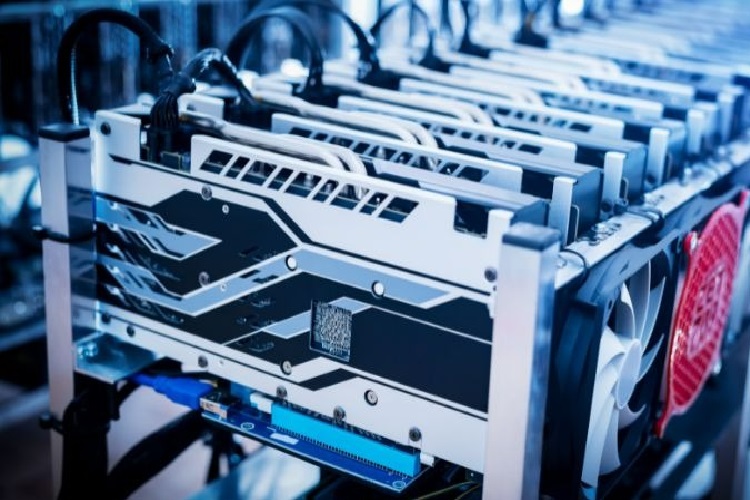
09/26/2023
0 Comments
1. Exploring Bitcoin’s path to a renewable mining future
There’s a prevalent notion that as Bitcoin (BTC) grows, so does its environmental footprint. But the latest data seem to paint a different picture.
Consider this: since 2019, Bitcoin’s computational power, or hashrate, has surged four times. You’d expect the associated carbon emissions to follow suit. Surprisingly, data suggests they’ve only gone up by a modest 6.9%.
Here’s an explanation to put things into perspective. Think of Bitcoin miners as the electric vehicles of the finance world. They don’t emit; they consume. The electricity they tap into might be green or not, just as an EV might be charged from renewable energy or a coal-fired plant.
To grasp the scale, Bitcoin’s annual energy consumption stands at 119.35 TWh as of Sep. 22, on par with countries like the Netherlands. Sounds massive, but when you compare it to global giants, Bitcoin uses just 2.8% of the energy the entire U.S. does, yet it overshadows the Czech Republic by a staggering 171%.
Before we brand Bitcoin an eco-villain or a green pioneer, let’s dive deeper and uncover the facts.
Is Bitcoin mining moving toward sustainability?
Coal once dominated the energy source conversation for Bitcoin. According to Batcoinz data, hydro is at the forefront, supplying 23% of Bitcoin’s mining power. Daniel Batten, an environmental, social, and governance (ESG) analyst behind the research, suggests that while 15.8% of mainstream on-grid power stems from hydro, more than half of sustainable off-grid mining taps this renewable source.
He states that wind energy isn’t far behind, making up 14% of Bitcoin’s power, bolstered by behemoths like Marathon and the wind-rich ERCOT grid, home to a quarter of Bitcoin’s mining operations.
Bitcoin pulls only 22.92% of its energy from coal, 21.14% from gas, and 2.28% from other sources, suggesting more than 50% of its energy consumption comes from sustainable energy sources, Batten suggests.
As of March 30, 2023, this energy distribution remained dynamic, subject to hashrate and mining shifts. And the future looks promising, with sustainable energy in the Bitcoin network growing by 6.2% yearly, heading towards a decreased dependency on coal and gas.
The Bitcoin Mining Council (BMC), representing nearly half of the global mining industry, indeed reports a significant increase in the use of renewables, with 58.9% of mining electricity sourced from renewables in Q4 2022, a substantial rise from 36.8% in early 2021.
However, the rate at which crypto miners adopt renewable energy sources remains a subject of debate.
The BMC’s claim of almost 60% renewable energy usage clashes with the numbers provided by the Cambridge Center for Alternative Finance, which indicates a lower adoption rate. George Kamiya, an energy analyst at the International Energy Agency, told Time that while the BMC may possess more extensive data, their figures stem from self-reported surveys lacking in-depth methodological details.
This discrepancy in reported figures underscores the need for transparency and rigorous analysis when evaluating the extent of crypto mining’s shift toward renewable energy sources.
Bitcoin’s journey beyond ASICs
Once, the Bitcoin gold rush was all about ASICs (Application-Specific Integrated Circuits). Pioneers chased after the latest, fastest, most energy-efficient hardware.
Flash forward from 2014, and today’s ASICs outpace their predecessors by a staggering 36 times in energy efficiency per gigahash. But every gold rush hits a vein, and we’re nearing that with ASICs. Their efficiency leaps are becoming baby steps, as charts reflect.
Some experts believe that Bitcoin’s next frontier isn’t just about faster hardware; it’s about sustainability. Green energy like solar and wind power have become cheaper than fossil fuels, as shown in recent energy cost charts.
The road ahead
Bitcoin, once criticized for its environmental impact, is undergoing a significant transformation. It could change its image from a carbon-heavy culprit to an advocate for eco-friendliness, with green energy leading the way.
However, there are challenges on this green path. Renewable energy sources like solar and wind can be unpredictable due to their intermittent nature. Nevertheless, these hurdles present opportunities. Innovations in energy storage, smart grids, and hybrid systems could become crucial in Bitcoin’s journey towards sustainability.

2. Tether acquires stake in Bitcoin miner Northern Data, hinting at AI collaboration
The firm behind stablecoin Tether has invested an undisclosed amount into German-based crypto miner Northern Data Group in a move backing artificial intelligence (AI) initiatives.
In a Sept. 21 blog post, Tether said the strategic investment into Northern Data through Tether group company Damoon was intended to demonstrate “its determination to support emerging technology,” hinting at collaborations involving AI, peer-to-peer communications and data storage solutions. The company denied a report from Forbes regarding a $420-million investment but did not specify the exact amount when reached for comment. Cointelegraph also reached out to Northern Data but did not receive a response at the time of publication.
Northern Data announced in July that it had reached an agreement with Tether to acquire Damoon, a deal in which the stablecoin issuer “agreed to capitalize Damoon prior to completion of the acquisition with the funds needed to acquire latest-generation GPU hardware.” Tether chief technology officer Paolo Ardoino described the investment as a ”fresh venture into new technological frontiers.”
Tether claimed the investment was “separate from [its] reserves” and would not impact customer funds. The firm previously faced legal action in the United States following accusations it had not been fully transparent about its reserves, resulting in millions of dollars in fines and orders to provide reports on USDT’s backing.
As the largest stablecoin issuer by market capitalization at more than $83 billion, Tether has made many investments globally, from partnering with Kriptonmarket in Argentina to signing a memorandum of understanding to help develop peer-to-peer infrastructure with the government of Georgia. In August, Ardoino revealed some of the firm’s mining operations were based in Latin America, though it’s unclear if they could expand to Germany following the deal with Northern Data.
3. Bitcoin mining can help reduce up to 8% of global emissions
A paper published by the Institute of Risk Management (IRM) concluded that Bitcoin has the potential to be a catalyst for a global energy transition.
IRM Energy and Renewables Group members Dylan Campbell and Alexander Larsen published a report titled “Bitcoin and the Energy Transition: From Risk to Opportunity.” The paper argued that while BTC was perceived as a risk because of its energy consumption, it can also catalyze energy transition and lead to new solutions for energy challenges worldwide.
Within the report, the authors also highlighted the important function of energy and the increasing need for reliable, clean and more affordable energy sources. Despite the criticisms of Bitcoin’s energy intensity, the study provided a more balanced view of Bitcoin by showing the potential benefits BTC can bring to the energy industry.
According to the report, Bitcoin mining can reduce global emissions by up to 8% by 2030. This can be done by converting the world’s wasted methane emissions into less harmful emissions. The report cited a theoretical case saying that using captured methane to power Bitcoin mining operations can reduce the amount of methane vented into the atmosphere.
The paper also presented other opportunities for Bitcoin to contribute to the energy sector. According to the report, Bitcoin can contribute to energy efficiency through electricity grid management by using Bitcoin miners and transferring heat from miners to greenhouses.
“We have shown that while Bitcoin is a consumer of electricity, this does not translate to it being a high emitter of carbon dioxide and other atmospheric pollutants. Bitcoin can be the catalyst to a cleaner, more energy-abundant future for all,” the authors wrote.













